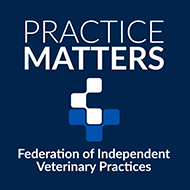Review calls for sea turtle monitoring
All seven species of sea turtle are seeing population declines.
A review from the Royal (Dick) School of Veterinary Studies has called for immediate action to safeguard sea turtle populations.
The researchers found that critically endangered turtles, such as the Kemp’s ridley and the hawksbill, were significantly underrepresented in monitoring studies. They also raised concern for the flatback sea turtle, which currently has no assessed conservation status due to the lack of monitoring data.
The research team reviewed more than 600 publications, spanning four decades, to consider the population monitoring efforts for sea turtle species.
Although conservation efforts are ongoing to protect the sea turtle, the findings highlight an immediate need to protect the animal. All seven species of sea turtle are seeing population declines.
Researchers are therefore pushing for population monitoring data to better inform conservation policies. This includes increased monitoring in Southeast Asia and Northern and Central Africa, where sea turtle populations are poorly understood.
Sea turtle population monitoring is usually managed using field-based methods, such as satellite tracking and nest surveys.
However, researchers say that genetic approaches are being underutilised in sea turtle population monitoring. They believe that this could ensure a higher genetic diversity, so turtle species can adapt to environmental changes.
The data from these studies could play an important part in updating official species assessments for the Red List of Endangered Species.
Despite evidence of significant population declines, some turtle species have not had updated assessments for over 15 years. The flatback turtle has not been assessed since 1996.
The research team say that it is urgent that there is international cooperation and collaboration with local communities to protect sea turtles, and therefore their local marine ecosystems.
Haley Hendrix, MSc student and first author, said: “The findings of this study serve as a call for immediate efforts to conserve sea turtle populations and safeguard the oceans they inhabit.
“Failure to address the identified gaps in sea turtle population monitoring could jeopardise not only these iconic marine animals but also the health and functioning of entire marine ecosystems.”
The full study can be found in the journal Diversity.
Image © Shutterstock



 The Federation of Independent Veterinary practices (FIVP) has announced a third season of its podcast, Practice Matters.
The Federation of Independent Veterinary practices (FIVP) has announced a third season of its podcast, Practice Matters.